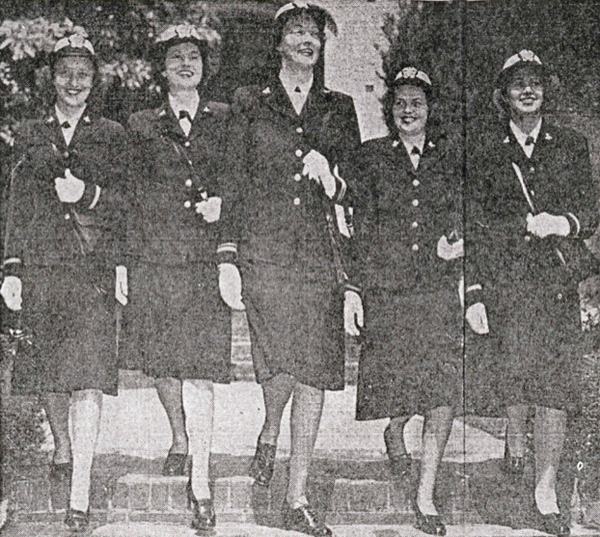Throughout United States’ history, women have served our nation in various ways with honor and distinction. Many volunteered to serve as nurses, cooks, and even spies, eagerly helping and supporting American soldiers in times of war. During World War II, new opportunities arose for women as the United States mobilized for war on two fronts. Congress, with support from the President, created two new all-women’s additions for the Army and the Navy. Those who didn’t enlist, supported the war effort and our military by volunteering to care for the sick and wounded through the Red Cross.
With the support of U.S. Representative Edith Nourse Rogers from Massachusetts, President Franklin Roosevelt signed the Navy Women’s Reserve Act into law on July 30, 1942, creating the all-women’s reserve addition of the U.S. Navy known as the WAVES, Women Accepted for Volunteer Emergency Service. This was the second such group added to the United States military as the Women’s Army Auxiliary Corp, or WAACs, was created one month prior. By 1945, this reserve of the United States Navy had recruited 86,000 members of whom 8,000 became female officers. While the original purpose of the WAVES was to train women in the Navy’s clerical and administrative jobs, their responsibilities grew throughout the course of the war and included air traffic control, engineering, computer programming, celestial navigation, parachute testers, and flying airplanes. The women’s service in World War II resulted in the first female Navy doctor, lawyer, bacteriologist, and computer specialist!

One such enlistee was none other than Marion Lloyd Stearns White, the future wife of Justice Byron White. During her time in the WAVES, Marion served as a decoder and recruiter at a San Francisco Base. Navy WAVES decoders served in cryptography teams and had the responsibility of decoding secret messages sent by the enemy during the war. It could be a taxing job, but those who were chosen felt that it was an honor. As a recruiter, Marion would have been responsible for helping the Navy meet the ever-growing demand for female WAVES recruits. Marion’s sister, Barbara Wootten, said Marion, “Loved the WAVES” and her daughter, Nancy Lippe, remembers that “She [Marion] always believed service to the community was important.”
Irene Alice Gerhardt Jackson, wife of Associate Justice Robert H. Jackson, served as a Red Cross Gray Lady and air raid warden during World War II. Known as “The Gray Ladies” for their uniforms of gray dresses and veils, the female volunteers provided non-medical services to sick, injured, and disabled patients during World War I, World War II, and the Korean War. The activities performed by the Gray Ladies included writing letters, reading, helping recuperating soldiers get involved in activities, and generally making the soldiers feel more comfortable and less lonely being away from their families. As an air raid warden, Irene would have overseen distributing gas masks and helping lead people to shelters in the event of an enemy air raid.
The service of women during both World Wars paved the way for their permanent place in the United States Military. Six years after the inception of both the WAACs and the WAVES, the United States Congress passed the Women’s Armed Forces Integration Act. That same year President Harry Truman issued Executive Order 9981 mandating equality of treatment for all servicemembers. The selfless legacy of women like Marion Sterns White and Irene Gerhardt Jackson helped to create the opportunities American women pursue today and we, as a nation, are eternally grateful for their exemplary service.
1 https://wams.nyhistory.org/confidence-and-crises/world-war-ii/women-in-the-army/
2 https://wams.nyhistory.org/confidence-and-crises/world-war-ii/navy-haute-couture/
3 https://www.history.navy.mil/browse-by-topic/wars-conflicts-and-operations/world-war-ii/1942/manning-the-us-navy/waves_75th.html
4 https://www.denverpost.com/2009/01/22/justices-wife-was-a-community-servant/
5 https://www.redcross.org/about-us/news-and-events/news/2021/women-an-important-part-of-american-red-cross-history.html




